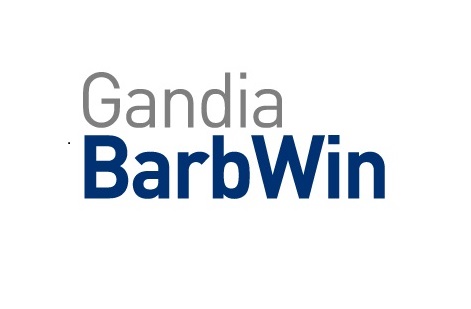
With us since 1996.
As you know, this year we are celebrating an anniversary. Recently, we enjoyed the celebration of TESI’s 40th anniversary together with our clients and the entire team.
A celebration that we will continue to remember throughout the year and that will surely be part of our memory. During 2024, we are experiencing many emotions as we recall how the company originated, where it has managed to reach, and the challenges it will face in the near future.
In this regard, we would like to go back to the beginnings of one of the most in-demand tools among clients, which has been with us since 1996: Gandia BarbWin.
Our colleague Vicent Rosell has witnessed the evolution of Gandia BarbWin from its origins (he started at TESI in 1998) to the present day, and he has prepared this detailed technical summary of the history of the innovative calculation center which will soon release its version 8. Enjoy it! He tells it like this:
“Right after joining, I found version Gandia BarbWin 2, already distributed with Delphi 2. I remember that after a month, Robert (our development colleague) asked me to add my first function: correspondence analysis (ANACO) with graphs.
During the first year, my mission was to use Delphi 3 and start the new version of Gandia BarbWin 3, whose main novelty was the change in how data was saved, from by records to by variables. This made it a more efficient system, both on disk and in memory.
Thus, we managed to release a new version every year, during September, which was installed via floppy disks. The first and last disks contained the personalization and the number of licenses.
In the next version, Gandia BarbWin 4, the most important technical improvements were added, including a new expression compiler that sped up filters and calculations. Tabbing was changed to a single, more efficient one, printing with threads was implemented allowing work to continue while printing, more multivariate calculations were added based on Fortran code, and the registration was changed to be based on a serial number.
With this change, we could start sending the program on CD, and the possibility of having a download area for updates via the Internet arose. Thanks to this, installation failures were reduced to a minimum.
In 1999, Josep, one of our founders, called me to make a program for Burke in Madrid for Coca-Cola that used the Conjoint analysis method. It went well, as we repeated the study the following year. We also made, for the first time, a program that accessed databases for AGCO, sellers of agricultural machinery, although it wasn’t very successful. But it served us to learn.
In 2000, Josep called us to see the possibility of developing a program to collect street interview data for new devices called “handhelds” with Windows CE, a direct commission from the company A.C. Nielsen.
After seeing that it couldn’t be programmed with Delphi, we decided to bet on Visual Basic for applications and expand the team for this project.
The experience with Burke and Coca-Cola made me think that programming ad-hoc studies with a compiler was not viable, because to change a comma in a question, the developer was needed. For this reason, it was decided to make a questionnaire designer in Delphi and its execution with another program made with Visual Basic on the device.
The problem we had to solve was the execution of expressions, but we found a solution that is currently applied in Gandia Qüest, Gandia Integra, and Gandia Integra Mobinet.
With these devices, surveys were collected in text files that could be transmitted over the Internet via modem or with the serial port to a central server. Furthermore, the first version of Gandia Codi was made in Delphi.
This is how we took advantage of this project to start developing CATI in 2001, which allowed for a contact database and random selection before starting the interview. This was initially a desktop application. And here ended my first stage, with more technological changes.”
Would you like to discover the new technological features that Gandia BarbWin currently offers? You can access here to find out.
